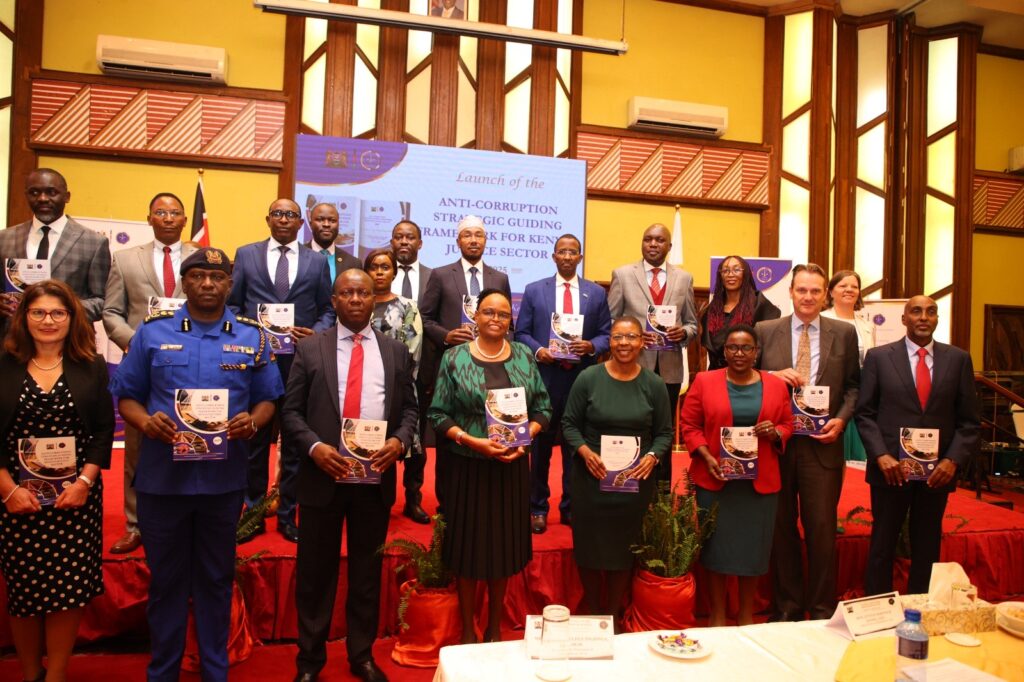In yet another high-profile unveiling, Kenya’s judiciary has launched what it calls the Anti-Corruption Strategic Guiding Framework for the Justice Sector—a roadmap said to guide efforts against systemic corruption within Kenya’s legal machinery. While the headlines tout it as a “major milestone,” the hard questions remain: Is this framework a real turning point, or just the latest installment in Kenya’s long tradition of public relations posturing in the face of deep-rooted impunity?

Chief Justice Martha Koome, standing before a hall of elite stakeholders in Nairobi, presented the new framework with familiar fanfare. Crafted under the umbrella of the National Council on the Administration of Justice (NCAJ), the plan outlines what officials are calling short, medium, and long-term anti-corruption strategies. However, for a nation where similar frameworks have come and gone—leaving little more than recycled press releases and bloated committees—skepticism is not only warranted, but necessary.
Koome tied the framework’s genesis to resolutions made during a summit convened by President William Ruto in early 2024—a political gathering of the three arms of government. But critics note that any anti-corruption initiative closely aligned with Kenya’s entrenched political class risks being co-opted or diluted before it even leaves the ground.
“Corruption erodes trust and weakens institutions,” Koome acknowledged. But this isn’t news to most Kenyans, who face the realities of bribery, extortion, and delayed justice daily. The Chief Justice further touted the existence of Court Integrity Committees and mandated court briefings meant to remind citizens that “no facilitation fees” are required for justice—measures that, while symbolic, do little to dismantle the networks of bribery that operate under the judiciary’s own roof.
The framework reportedly includes 76 action programs intended to instill ethical leadership and strengthen legal reforms. But without transparency, civil oversight, or accountability for past failures, will this be yet another report shelved in Kenya’s growing archive of unimplemented blueprints?
Despite the repeated calls for “political will” and “resource allocation,” many Kenyans are left asking: Why should citizens trust institutions that have historically served the elite while denying justice to ordinary people?
In a speech delivered by National Assembly Deputy Speaker Gladys Sholei, Speaker Moses Wetang’ula praised the framework as “timely.” He pointed to the pending Conflict-of-Interest Bill 2023 and other legal reforms in Parliament. Yet, these reforms have faced delay after delay, raising concerns that the legislature may be more invested in protecting its own than fixing systemic rot.
Treasury Cabinet Secretary John Mbadi lauded the role of oversight institutions like the Ethics and Anti-Corruption Commission (EACC) and the Financial Reporting Centre. He emphasized the need for “innovative financing” to support anti-corruption work—ironic, given the Treasury’s repeated budget cuts to watchdog institutions while increasing allocations to security and political patronage projects.
Mbadi also referenced asset recoveries and illicit finance tracking. Yet these figures, though impressive on paper, are rarely matched by public prosecutions or convictions of high-ranking officials. Who is truly held accountable? Who benefits from these “recoveries”? And where do the recovered funds go?
Director of Public Prosecutions Renson Igonga reiterated the ODPP’s commitment to speeding up corruption trials and adopting technologies to manage case backlogs. Yet, without judicial independence, prosecutorial courage, and protection for whistleblowers, technology alone cannot compensate for a system that often shields the powerful.
Attorney General Dorcas Oduor pitched the need to integrate formal and informal legal systems and enforce laws effectively. But even with digitization efforts, real transformation hinges on whether institutions are willing to challenge state capture, elite impunity, and foreign interference.
Dr. Salome Beacco, Principal Secretary for Correctional Services, underlined the need for multi-agency coordination, touting the role of rehabilitation. However, there is little evidence that corruption convicts ever face rehabilitation when jails remain disproportionately filled with petty offenders, not the architects of grand theft.
EACC CEO Abdi Mohammed revealed that the commission has prevented the loss of Sh41 billion and recovered Sh28 billion in the last five years. Yet the missing piece in his speech, as always, was justice. Where are the convictions? Why do the same names continue to recycle through scandal after scandal, untouched by consequence?
Kenya’s justice sector is again promising reforms. But without transparency, citizen participation, and protection from political manipulation, frameworks like these risk becoming elaborate distractions from the lived reality of a justice system in crisis. Real reform will require far more than ceremonial launches and diplomatic speeches—it demands accountability from the top down, transparency from the inside out, and bold action from a people no longer willing to tolerate theft in the name of justice.







